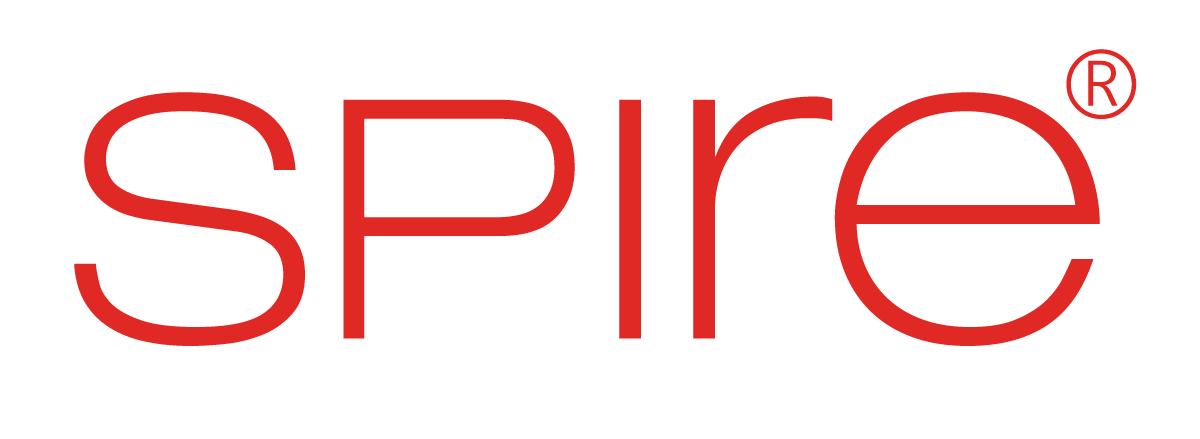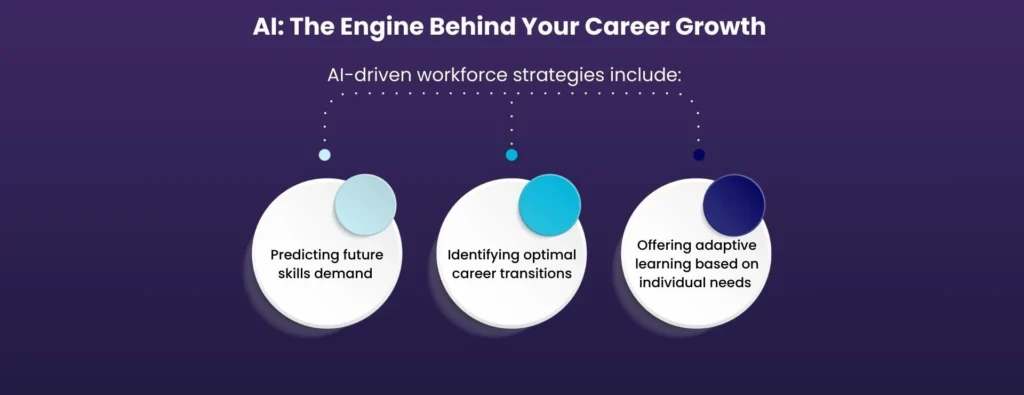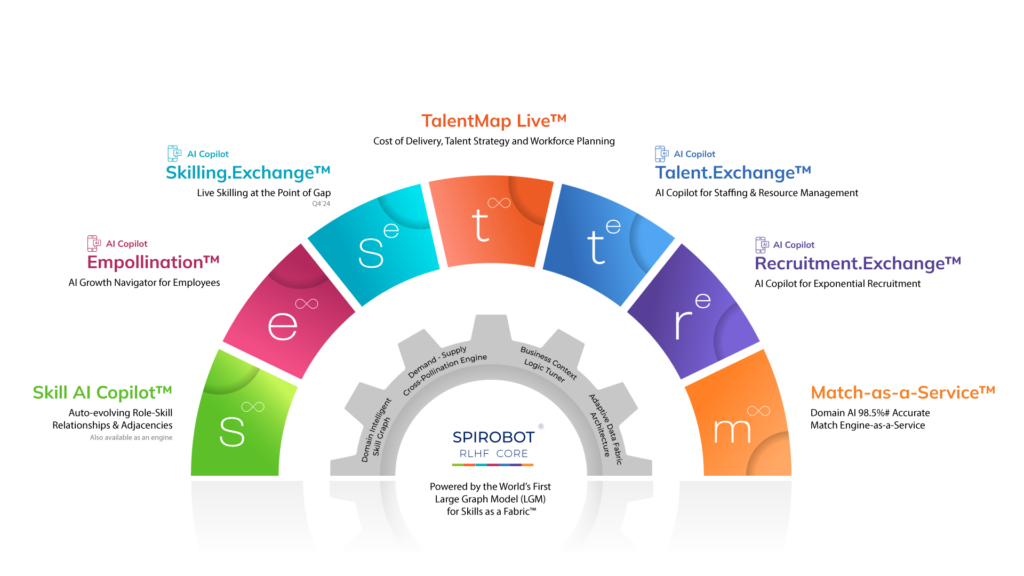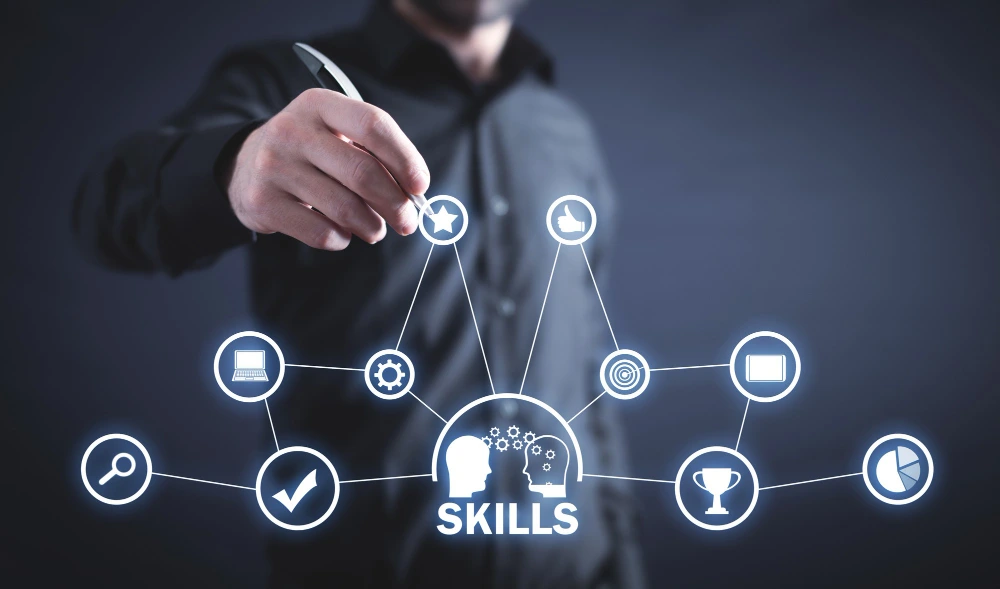The idea of hyper-personalization in work might sound like a luxury, something that only the most forward-thinking, tech-savvy organizations can afford. In reality, hyper-personalization is no longer a choice; it is a necessity.
The workforce has changed. Employees today are not just looking for jobs; they are looking for career ecosystems that recognize their unique skills, ambitions, and potential. A 2023 Deloitte report found that 74% of employees feel disconnected from their company’s career development offerings. Traditional HR models, built around static career ladders and generic training programs, fail to resonate with employees who expect more control over their professional growth.
Hyper-personalization, powered by AI, is redefining talent management by shifting from rigid career frameworks to dynamic, individualized pathways. But is this a win-win for both employees and organizations? Let’s explore how AI is reshaping the future of work and the challenges that come with it.
Breaking Away from One-Size-Fits-All: The Need for Hyper-Personalization
For decades, companies have relied on standard job descriptions, hierarchical career paths, and blanket training programs. While these worked in an era where job roles were predictable, and employees stayed with companies for decades, they fall short in today’s skills-based economy.
- The skills gap is widening: According to the World Economic Forum, 44% of workers’ core skills will need to change by 2027 due to automation and AI.
- Career stagnation leads to attrition: A McKinsey study found that employees who do not see clear career growth opportunities are 2.5x more likely to leave their organization.
- Personalization drives engagement: A report from PwC revealed that employees are 80% more likely to stay with companies that offer personalized career growth plans.
In short, failing to provide personalized career development isn’t just inefficient—it’s a talent retention risk.
AI: The Engine Behind Personalized Work Journeys
Hyper-personalization is not just about offering employees choices; it’s about using AI-driven insights to craft deeply individualized career experiences. AI’s role in talent management is transforming from reactive (identifying skills gaps after they appear) to proactive (predicting and preparing for future workforce needs). Let us delve deeper into understanding what AI-driven workforce strategies can do.
Replace Career Ladders With Career Maps
Traditional career ladders assume a linear progression: an employee moves up within a set function (e.g., from junior marketer to senior marketer to marketing director). AI-driven career maps introduce non-linear, skill-based progressions where employees discover roles aligned with their evolving interests and capabilities.
Example: A project manager with strong analytical skills might be better suited for a transition into data analytics or operations leadership rather than just moving up within project management. AI scans millions of career transitions and market trends to offer tailored recommendations based on real-world workforce data.
80% of employees who made successful career shifts did so into adjacent skill areas rather than staying within traditional vertical career paths.
Make Learning Adaptive and Contextual
Instead of mandatory training programs that apply to everyone, AI-driven role-skill architectures ensure employees receive tailored learning pathways that match their aspirations, current roles, and future potential.
How it works: AI assesses real-time job market trends, industry-specific skills demand, and an individual’s performance data to create a dynamic learning roadmap.
Example: A software engineer aiming for a leadership role might receive personalized learning recommendations on agile team management, cross-functional communication, and stakeholder management, skills that wouldn’t be covered in a standard technical training module.
Stat: Personalized learning boosts engagement by 47% and knowledge retention by 60%.
Ensure Role-Skill Fit, Not Just Job Titles
The Future of Hiring: Role-Skill Fit, Not Just Job Titles
1. Domain-AI matches candidates based on competencies rather than outdated job titles.
2. This method reduces mismatches and ensures a workforce aligned with industry needs.
Traditional job matching relies heavily on job titles, tenure, and degrees, ignoring a candidate’s true skill set and potential. AI flips this model by matching employees with roles based on skills, competencies, and future potential.
Companies using AI-driven skill-matching reduce hiring mismatches by 40% and improve workforce productivity by 25%.
But Does Hyper-Personalization Come with Risks?
While AI-powered hyper-personalization brings undeniable advantages, it is not without risks and ethical dilemmas. Here’s what organizations need to consider.
AI Bias: A Double-Edged Sword
AI models are only as good as the data they are trained on. If historical hiring and promotion patterns are biased, AI may reinforce rather than eliminate inequalities. A 2021 MIT study found that AI-driven hiring tools were biased against female applicants in STEM fields because they were trained on historical data where men were disproportionately hired.
Solution: Organizations must implement diversity-first AI training, ensuring algorithms promote equity and opportunity rather than perpetuating existing biases.
Privacy vs. Personalization: How Much Is Too Much?
Hyper-personalization requires vast amounts of employee data.
- Performance metrics
- Learning history
- Career aspirations
- Behavioral analytics
But how much data collection is ethical? Employees may resent AI-driven career decisions if they feel they are under constant surveillance.
Around 67% of employees are uneasy about AI-based career tracking and prefer more human involvement in decision-making.
Solution: Companies must be transparent about what data is collected, how it is used, and how employees can opt in rather than being passively tracked.
Over-Automation: AI Shouldn’t Replace Human Judgment
AI can optimize career decisions, but it cannot replace human intuition and emotional intelligence. If career development becomes too reliant on AI, employees may feel disconnected from HR leadership.
Best Practice: AI should augment, not replace, human mentorship. Some companies combine AI-powered talent analytics with personalized coaching programs to ensure career recommendations are aligned with individual aspirations and company needs.
Spire.AI: Pioneering AI Hyper-Personalization for Workforce Development
Spire.AI is redefining workforce intelligence by seamlessly integrating AI-driven insights with human-centered career development strategies. Unlike conventional HR platforms that rely on historical job data and static career paths, Spire.AI’s real-time AI role-skill architecture adapts to the ever-changing landscape of skills, job roles, and employee aspirations.
The platform is built on three core AI capabilities:
AI-Powered Skill Graphs: Enabling Continuous Career Mobility
Traditional job frameworks are rigid, often restricting employees to linear career trajectories that may no longer align with evolving industry demands. Spire.AI disrupts this by introducing dynamic skill graphs, which continuously map an employee’s,
- Current skill set: Capturing technical, soft, and emerging skills.
- Skill adjacencies: Identifying related capabilities that could facilitate non-linear career transitions.
- Market-aligned opportunities: Matching employees with future-ready roles based on industry trends.
How It Works:
- Spire.AI uses Domain-Intelligent AI and Large Graph Model (LGM) for Skills to analyze job descriptions, employee performance, learning progress, and market trends in real time.
- Employees receive customized career path recommendations based on both their existing skills and their potential for upskilling.
Example:
An employee in cybersecurity may receive AI-generated suggestions for adjacent career paths in cloud security, ethical hacking, or AI-driven threat intelligence based on real-time industry demands rather than outdated career ladders.
Result:
Organizations leveraging Spire.AI’s skill graph technology report 30% faster upskilling cycles, significantly reducing the time required for employees to transition into high-demand roles.
Personalized Career Recommendations: Data-Driven Career Progression
Rather than relying on guesswork or traditional HR assessments, Spire.AI provides AI-powered career recommendations, allowing employees to visualize multiple career trajectories before making a move.
How It Works:
- Employees enter their current job roles, skill levels, and career interests into the system.
- Spire.AI generates real-time, data-driven projections of possible career paths, including estimated time to upskill and job market demand.
- Employees receive customized skill-learning plans, certifications, micro-learning courses, and mentorship recommendations that align with their chosen path.
Example:
A marketing professional interested in transitioning into product management can use Spire.AI to explore.
- Required skills: Identifying gaps in product strategy, UX, and analytics.
- Learning pathways: AI-driven recommendations for targeted courses or projects.
- Projected career growth: Data-driven onboarding timelines.
Result:
Companies that implement AI-driven career recommendations see an increase in employee engagement as employees feel more empowered and informed in their career decisions.
Diversity-First AI Models: Mitigating Bias & Ensuring Inclusive Talent Mobility
One of the biggest challenges in AI-driven talent management is ensuring fair and equitable career opportunities. Many AI-driven platforms unintentionally reinforce biases, favoring certain demographics based on historical hiring and promotion data.
Spire.AI actively combats AI bias by,
- Using diverse data sources: The AI is trained on global, industry-wide datasets rather than company-specific historical data, reducing legacy bias.
- Regularly auditing algorithms: Spire.AI’s bias-detection mechanisms continuously scan for patterns that could disadvantage underrepresented groups.
- Promoting skills-based hiring: The system deprioritizes traditional credentials (e.g., degrees from elite universities) and instead focuses on competencies and potential.
Case Study: How Spire.AI Transformed a Fortune 500 Workforce
One of the world’s leading technology firms partnered with Spire.AI to overhaul its career development framework, replacing manual HR-driven assessments with AI-powered career mapping.
Key challenges before AI implementation:
- Limited internal mobility: Employees struggled to find relevant career growth opportunities within the organization.
- High external hiring costs: The company relied heavily on external talent acquisition rather than reskilling existing employees.
- Low engagement in learning programs: Only a few employees completed training courses, citing irrelevance to their career goals.
Results after implementing Spire.AI:
- Increase in internal mobility: Employees now transition into new roles based on real-time skill insights rather than waiting for open job postings.
- Reduction in external hiring costs: By focusing on upskilling internal talent, the company significantly cut recruitment expenditures.
- Higher employee retention: Employees feel more valued and motivated, leading to improved retention rates.
- Learning engagement doubled: Completion rates for training programs increased as employees received personalized learning recommendations.
Key Takeaway: By integrating Spire.AI’s hyper-personalized role-skill architecture, the company not only optimized workforce planning but also fostered a culture of continuous growth and mobility.
Final Thoughts: Hyper-Personalization Is a Necessity, Not a Trend
The future of work is not about replacing employees with AI; it’s about using AI to create career paths that are meaningful, dynamic, and uniquely tailored to each individual.
HR and talent leaders who embrace AI hyper-personalization will not only future-proof their organizations but also foster a workforce that is engaged, skilled, and motivated. Organizations that fail to adapt will struggle with high attrition, low engagement, and a workforce that feels undervalued.
Hyper-personalization is no longer a competitive advantage; it is the foundation of a skills-based economy. The question is no longer if organizations should adopt it but how quickly they can make it happen.







